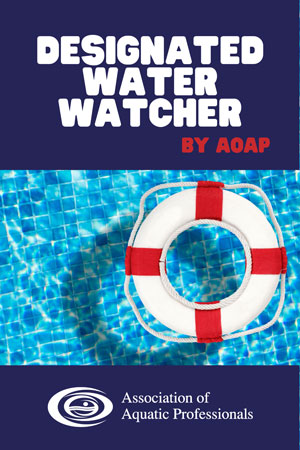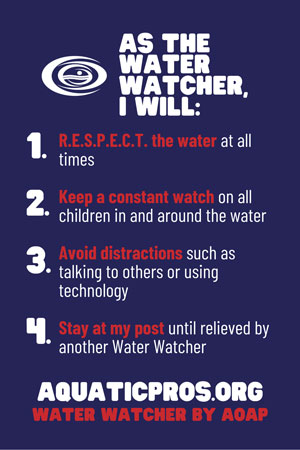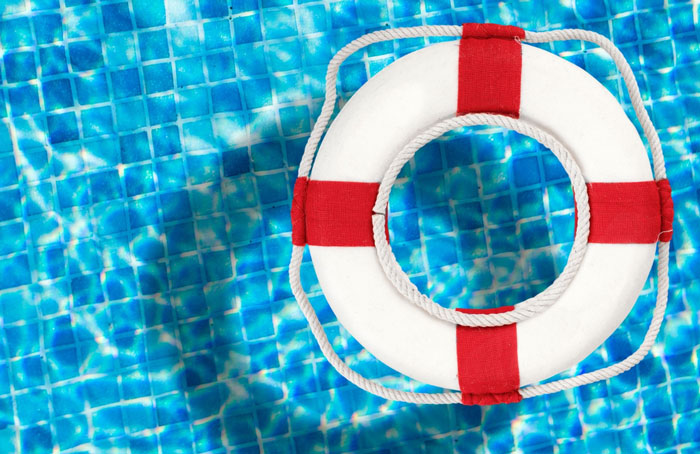Drowning prevention is top and foremast in so many organizations, foundations, communities and individuals. The great

thing is that there are so many free drowning prevention materials that are readily available for everyone to use.
Lately the industry has been seeing some pretty “heated” discussion around drowning prevention and various aspects of the best way to educate people and the proper steps to take. This includes what various groups or individuals feel should or should not be included in drowning prevention programs and education.
The best part is that there is not just one way to provide this education or one way to look at it. Many of the organizations and groups that provide drowning prevention information talk about what we call “Layers of Protection” within the aquatic industry. The first and foremost layer is providing what I call, “Constant, Direct, Uninterrupted Supervision” at all times. Others call it by a variety of names, but it all means the same thing: The provision of constant, direct, uninterrupted supervision can and does prevent drowning. This also entails not having any other “duties” other than watching the individuals in your care, and avoiding any distractions, such as reading, cell phone use of any kind, phone calls, computers, teaching, instructing, etc.
Drowning prevention programs consist of many layers and vary based on the organization or person creating them. The Association of Aquatic Professionals has a free drowning prevention program called “R.E.S.P.E.C.T. the Water Drowning Prevention Campaign.” It has been used by many communities, fire departments, police departments, organizations and individuals as well.
With the number of drownings that occur each year, we want to help everyone learn how to RESPECT the Water. The Association of Aquatic Professionals is committed to helping prevent drownings nationwide. We believe with a little education and training, learning to RESPECT the water and prevent drowning tragedies is within our reach.
Our approach is simple:
- Recognize: Recognize the signs of non-swimmers, tired swimmers, distressed swimmers and potentially unsafe situations.
- Education: Learn what factors can lead to drowning
- Supervision: Direct, constant supervision is key.
- Physical barriers: Provide fencing, safety covers, alarms and life jackets.
- Expectations: Understand what to expect from the aquatic environment and the body’s response, know your limits.
- Communicate: Warn and inform, communicate the dangers that are present in, on and around the water.
- Training: Learn to swim and how to respond to an emergency.

Working with Olympic swimmers such as Matt Biondi, Elizabeth Beisel and Dana Vollmer, the association has developed various public service announcements (PSAs) to spread the drowning prevention message, from the Overall Program PSAs in English and Spanish to two new PSAs on “How to Put on a Life Jacket Properly and Why They Are Important” and the “Importance of Having a Water Watcher.” Two additional books will be coming out shortly that correspond with the Water Watcher PSA, and the third and final PSA will be coming out in February and will be provided in conjunction with sports commentator and former Olympic swimmer Summer Sanders. A book will follow shortly.
The point of drowning prevention programs is to help ensure the safety of everyone in and around the water. Many layers of protection need to be put in place to make this happen. We do not compare programs. We just want everyone to know that layers of protection are important and that the more layers that you put in place, the more likely fatal and non-fatal drownings can be prevented. Other drowning prevention suggestions can be found via the National Drowning Prevention Alliance (NDPA), Josh the Otter, Stop Drowning Now, Colin’s Hope, the American Red Cross, the Centers for Disease Control & Prevention’s Drowning Prevention Information, and Drennen’s Dreams Foundation, among others.
Not all programs may consist of the same suggestions or layers, but we all know that the goals are the same. And the number one layer should always be to remember to provide “Constant, Direct, Uninterrupted Supervision” at all times. This includes during swim lessons, PE classes, swim team practices and swim meets, with separate lifeguards on duty who have no other duties assigned but to provide this supervision. Coaches, instructors, teachers, etc., are not able to provide this constant, direct, uninterrupted supervision as they have other tasks.
Drowning prevention is about preventing fatal and nonfatal drownings from occurring, and it starts with each one of us. It does not matter which “program” you use as long as you follow the many layers of protection that are out there. Stay safe everyone! RM
ABOUT THE AUTHOR
Juliene Hefter is executive director and CEO of the Association of Aquatic Professionals. AOAP is a cutting-edge nonprofit with a mission to foster networking, education, advocacy and development opportunities for professionals across all areas of aquatics.



